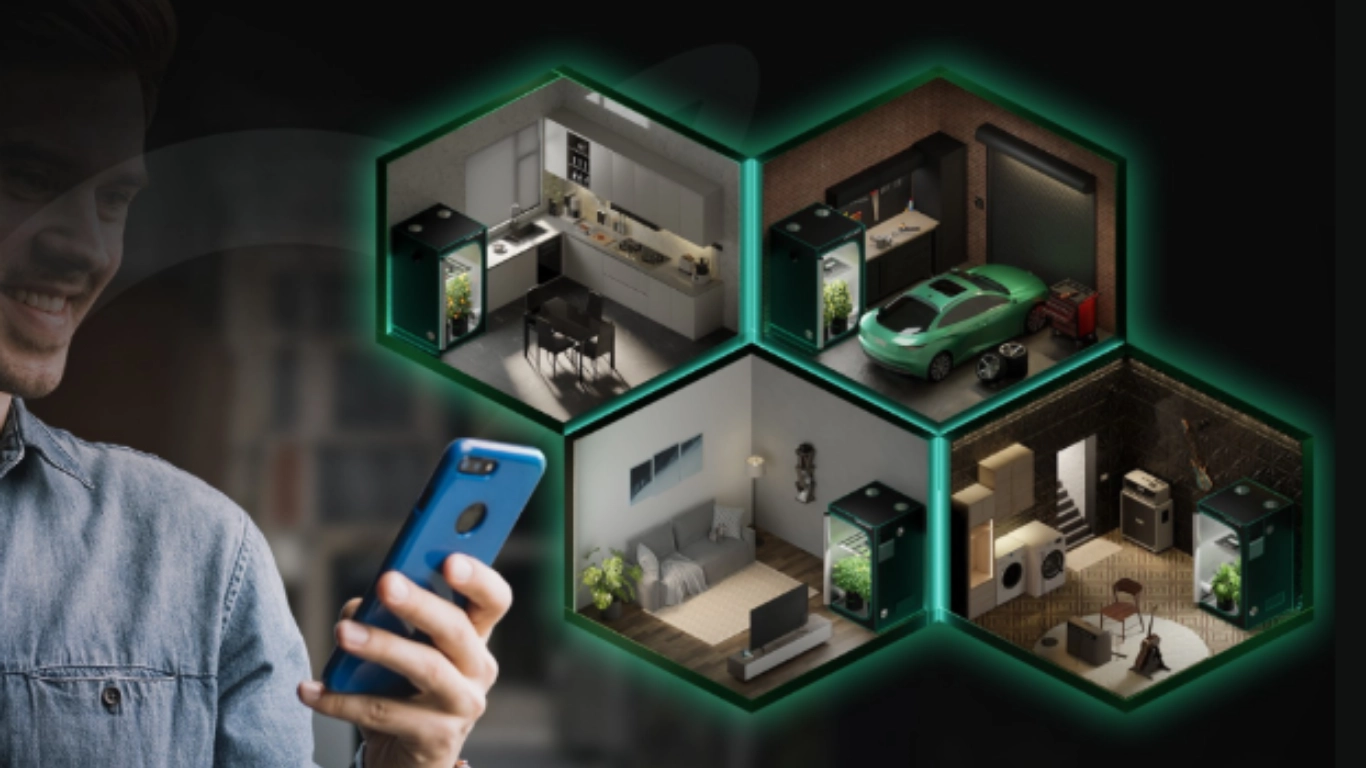Indoor gardening is evolving. What was once a hobby requiring constant attention and manual adjustments is now becoming more precise and accessible thanks to technology. The growing trend of smart gardening is helping hobbyists and professional growers alike maintain optimal conditions, maximize yields, and enjoy a more efficient growing experience.
What Is Smart Gardening
Smart gardening is all about using technology to make indoor growing easier and more predictable. Instead of relying on guesswork, growers can monitor and control their environment with the help of smart devices. From tracking temperature and humidity to adjusting lighting and airflow, these tools ensure plants thrive in ideal conditions.
Essential Smart Gardening Tools
Some of the key technologies driving this trend include:
Grow Room Controllers
Grow room controllers are the central hub that manages your indoor growing environment. They monitor essential factors like temperature, humidity, CO₂ levels, and light schedules, ensuring plants are always in optimal conditions. By automating these adjustments, controllers remove much of the guesswork from indoor gardening, helping plants stay healthy and productive without requiring constant manual intervention.
Smart Sensors
Smart sensors track environmental conditions continuously, providing real-time feedback on your garden. They can detect fluctuations in temperature, humidity, or other critical factors that could stress your plants. By alerting you to these changes or feeding data directly to your grow room controller, sensors allow for quick corrective action, protecting your plants and supporting consistent growth.
Mobile Apps
Modern smart gardening systems often include mobile apps that put complete control in the palm of your hand. With these apps, you can adjust light schedules, monitor environmental conditions, and receive alerts about your plants’ needs—even when you’re away from your grow room. This convenience makes it easy to manage your indoor garden efficiently and stay connected to your plants at all times.
Key Benefits of Smart Gardening
By integrating controllers, sensors, and apps, smart gardening offers several advantages:
Consistency
One of the key benefits of smart gardening is the consistency it provides. Automated adjustments by controllers and sensors ensure that your plants experience stable conditions, which reduces stress and promotes healthy development. Consistent lighting, temperature, and humidity allow plants to focus energy on growth and fruiting, ultimately leading to better yields.
Efficiency
Smart gardening technologies make indoor growing more efficient by handling repetitive tasks automatically. Fans, lights, humidifiers, and other devices can operate on schedules or respond to environmental changes without manual intervention. This efficiency not only saves time and energy but also allows gardeners to focus on planning, monitoring, and improving their setups.
Data-Driven Decisions
By collecting and analyzing environmental data, smart gardening systems enable data-driven decisions. Growers can identify patterns, track progress, and make informed adjustments to optimize plant health and maximize yields. With access to detailed insights, it becomes easier to prevent problems before they arise, fine-tune growth conditions, and achieve consistently better results.
Embracing the Future of Indoor Growing
The trend of smart gardening is only growing. As technology becomes more affordable and user-friendly, more indoor gardeners are adopting automated systems to simplify care and maximize yields. Smart gardening isn’t just a convenience—it’s the future of indoor horticulture, offering a more precise, efficient, and rewarding way to grow plants indoors.







